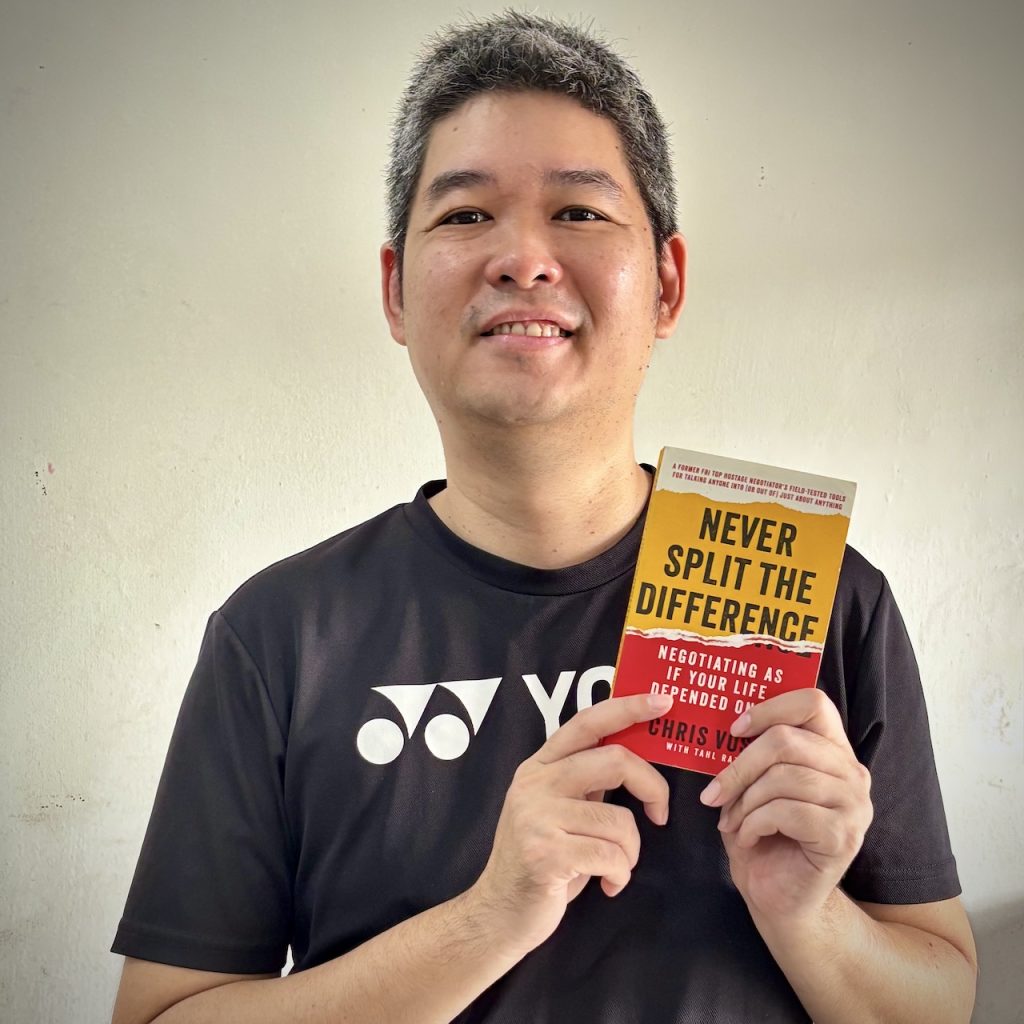Mastering Sales Negotiation: Proven Tactics for Closing More Deals
- February 12, 2025
- Posted by: Leik Hong
- Category: Sales
Introduction
Sales negotiation is an art that requires emotional intelligence, psychology, and strategy. Chris Voss, a former FBI hostage negotiator, redefines traditional negotiation techniques in his book Never Split the Difference, offering powerful insights that can help sales professionals close deals without unnecessary compromises.
If you’re struggling with price objections, stalled negotiations, or difficult clients, Voss’s approach can transform your sales process. This article will break down his top negotiation strategies and how to apply them effectively in sales conversations.

1. Use Tactical Empathy to Build Trust
Tactical empathy involves genuinely understanding and validating a prospect’s emotions. This helps salespeople build trust and uncover the underlying motivations behind objections.
🔹 Example: Instead of countering a price objection immediately, acknowledge the prospect’s concerns:
📌 “It sounds like you’re concerned about the investment and its ROI.”
Why it works: Prospects feel heard and are more likely to open up about their real concerns.
2. Mirroring to Encourage Prospects to Reveal More
Mirroring is a simple but effective technique where you repeat the last 1–3 keywords your prospect just said. This encourages them to elaborate and share more details.
🔹 Example:
🚀 Prospect: “We need a more flexible pricing structure.”
🛠️ Salesperson: “A more flexible pricing structure?”
📌 Why it works: Mirroring makes the prospect feel understood and often leads them to clarify their needs, giving you more negotiation leverage.
3. Labeling to Reduce Objections
Labelling is a technique where you identify and verbalise a prospect’s emotions to diffuse tension and create rapport.
🔹 Examples:
📌 “It seems like reliability is a major concern for your business.”
📌 “It sounds like you’re worried about implementation speed.”
Why it works: Labeling neutralises objections by acknowledging the emotion behind them, making prospects feel validated.
4. Use “No”-Oriented Questions to Gain Control
People feel defensive when pushed toward a “yes” too soon. Instead, Voss suggests encouraging a controlled “no” response to make prospects feel in control.
🔹 Examples:
📌 “Is this a bad time to discuss pricing?”
📌 “Have you given up on finding a better solution?”
Why it works: Saying “no” makes the prospect feel safe and opens the door for honest dialogue.
5. Trigger the “That’s Right” Moment
The phrase “That’s right” is a strong confirmation that the prospect sees alignment between their needs and your solution.
🔹 Example:
📌 “So, you need a scalable CRM that integrates seamlessly with your existing system and stays within budget.”
Why it works: When a prospect says, “That’s right,” they subconsciously agree with your understanding, moving the negotiation forward.
6. Use Calibrated Questions to Guide Prospects
Avoid direct, closed-ended questions. Instead, ask open-ended “how” and “what” questions to guide the prospect to your solution.
🔹 Examples:
📌 “How can we structure this so it works for both of us?”
📌 “What would an ideal solution look like for you?”
Why it works: These questions encourage collaboration instead of confrontation.
7. Anchoring and Framing in Pricing Discussions
Pricing discussions are where many sales negotiations falter. Use anchoring and framing to control the conversation.
🔹 Key Techniques:
📌 Use precise numbers: $14,750 sounds more calculated than $15,000.
📌 Pivot to non-monetary value: Instead of discounting, offer extended service, training, or other perks.
📌 Leverage loss aversion: “What’s the cost of doing nothing?”
8. Avoid Splitting the Difference
Compromising often results in less-than-ideal deals for both sides. Instead, use the above techniques to create a better outcome without reducing your price.
🔹 Example: Instead of meeting halfway on price, offer additional support services that cost you little but add high perceived value.
Applying These Techniques in Sales
1. Cold Outreach
Replace “Do you have a minute to talk?” with “Is now a bad time?” to get a controlled “no” response and engage the prospect.
2. Handling Objections
Use labelling (e.g., “It seems like implementation costs are a concern”) and follow with calibrated questions.
3. Closing the Deal
Summarise key points (“Based on what you’ve shared, this solution aligns with X, Y, and Z”) to trigger a “That’s right” moment.
Final Thoughts
Mastering these negotiation tactics can give you a competitive edge in sales. By using tactical empathy, calibrated questions, and psychological techniques, you can build trust, uncover hidden needs, and close deals confidently—without unnecessary concessions.
Next Steps
Are you struggling to close deals, overcome objections, or negotiate without giving excessive discounts? Master the proven negotiation techniques top sales professionals use to win more deals confidently.
Send us an inquiry and book an intake call with our sales consultant.


